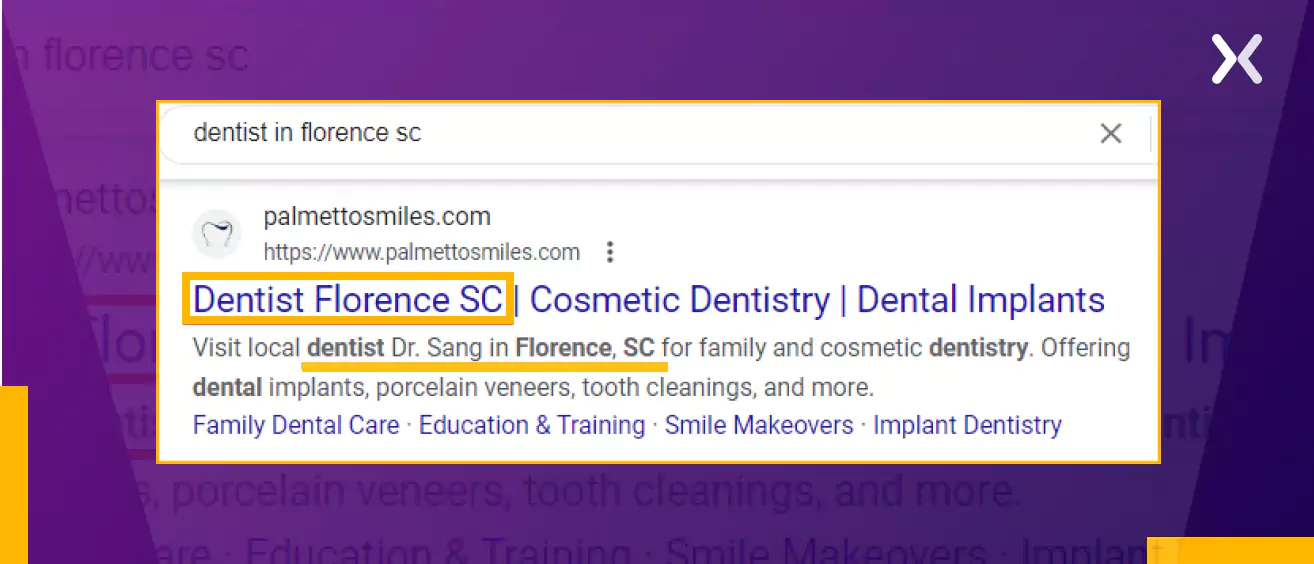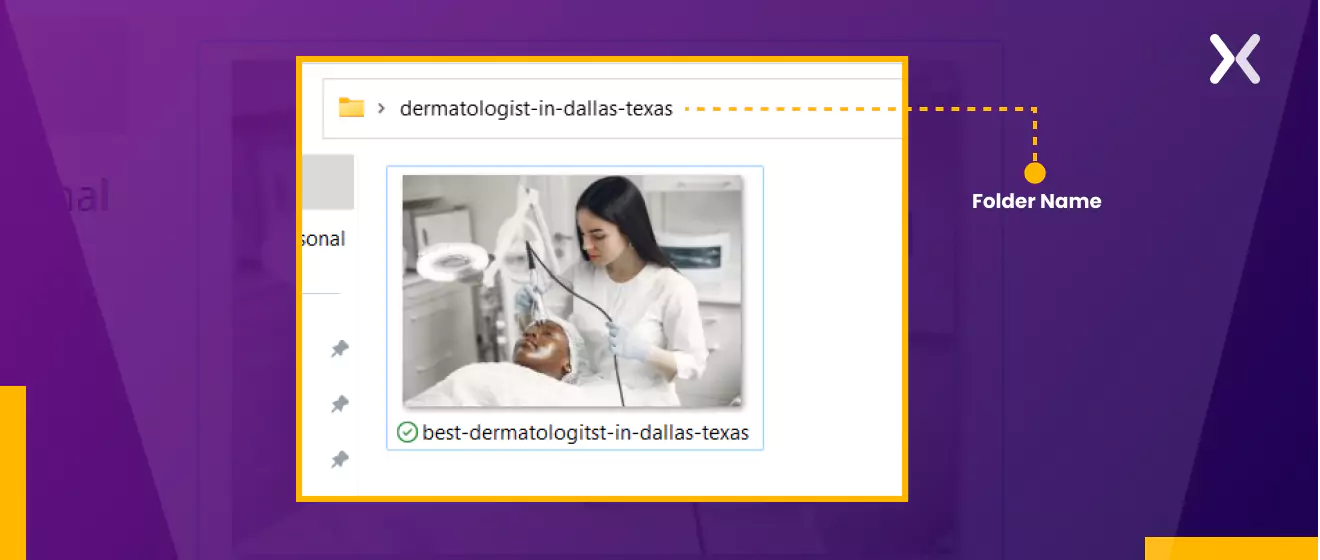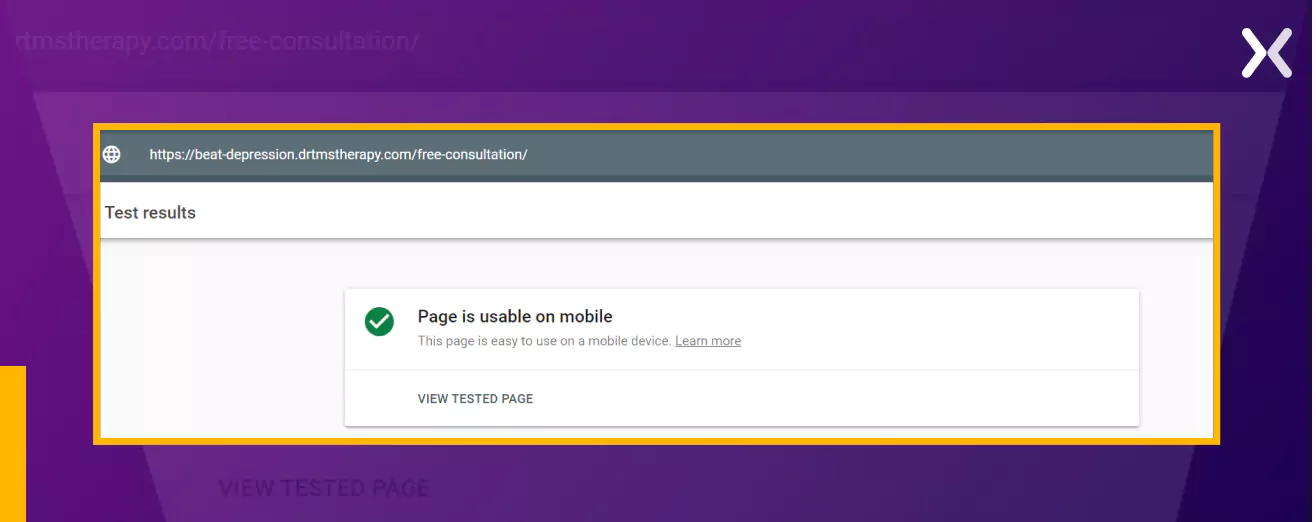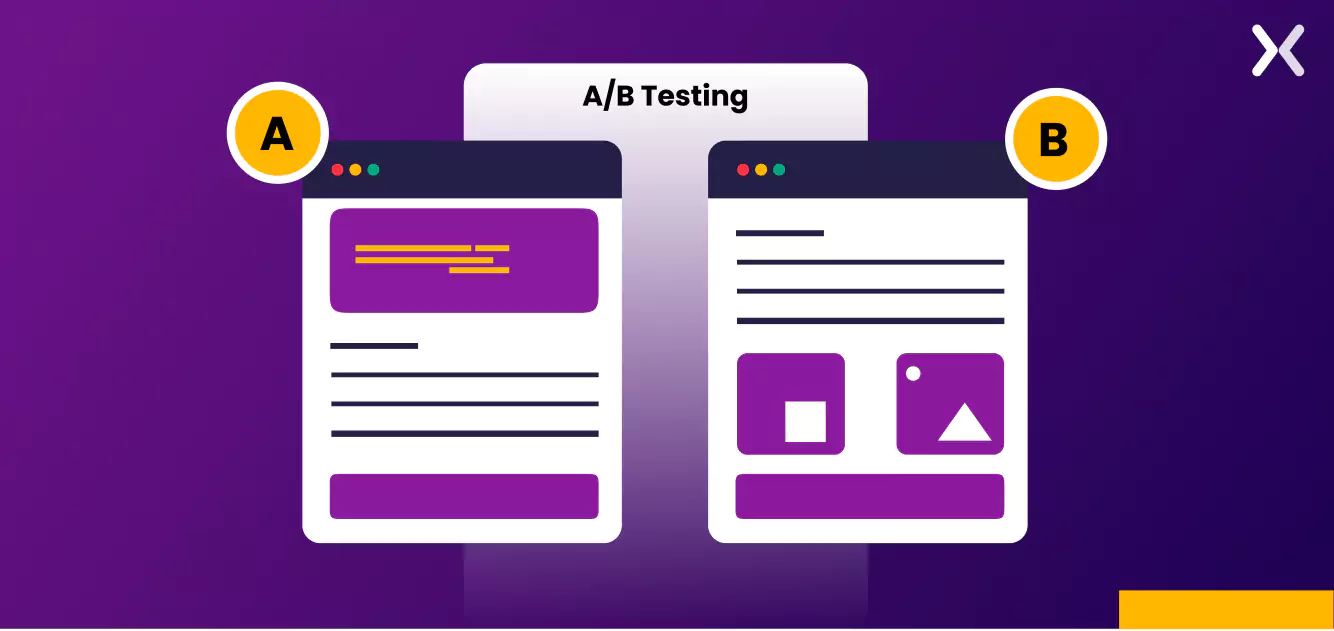When was the last time you used your smartphone for a nearby search – whether for food, shopping, or any service? You most likely found what you were looking for within seconds; everything is easily discoverable with a well-optimized local landing page.
A Localized Marketing Benchmark Report in 2022 showed that top-ranking local businesses on Google enjoyed a 612 percent surge in search traffic and a 397 percent increase in actions compared to those ranked 10th.
These local landing pages don’t always get the attention they deserve; however, poorly executed search engine optimization (SEO) can reduce the attention a local page receives.
Local landing pages serve as a tool to get discovered – so how can you ensure that your page reaches the right audience? Let’s explore how to craft and fine-tune your local SEO tactics.

Simply put, local SEO landing pages are web pages you customize and optimize to promote visibility in a targeted locality. This type of web page indicates your physical presence, the services you offer, and the regions you serve to potential customers and Google.

As per Think with Google, contemporary consumers seek immediacy and accuracy, resulting in a journey marked by ‘micro-moments.’ Local landing pages initiate these micro-moments, potentially cultivating lifelong patrons.
However, BrandMuscle’s 2020 research revealed the following:
58% of businesses were still not into local SEO
Only 30% had a plan to maximize high-converting local traffic
Google favors local landing pages because they often dominate search results for location-specific keywords or terms like “near me.”
The SERPs for such queries typically present the sponsored ads first.

Next follows the Google 3-Pack, a feature highlighting three local businesses – based on relevance, prominence, and proximity – alongside a map.

After Google features these, the organic search results then make their appearance.

Your Google Business Profile (GBP) contributes to your business appearing in the Google 3-Pack. Accuracy and completeness are essential here. Meanwhile, your local landing page aids your ranking in the organic search below the 3-Pack. A top position here attracts approximately 27.6% of clicks, enhancing your competitiveness in local organic search engine results.

For single-location businesses, it’s straightforward – link your local landing page to the optimized homepage, localizing the content for your location and keywords. However, for businesses with multiple locations or virtual operations that don’t require direct customer contact, local landing pages shine.
Optimizing these pages for each targeted location ensures your audience can find your site via an effortless search.
To achieve this, you have to perfect your landing page design for local SEO for more visibility in searches. In turn, this is what paves the way for a successful business transition.

Here’s a step-by-step guide to designing local landing pages to enhance local SEO and conversions.
Understanding your audience is crucial for effective local landing pages. Knowing what your potential customers want and their location when browsing your site is invaluable.
Ask yourself: Where are your current customers from, and where would you like future customers to come from?
To gather audience geographic details, you can use GA4. Navigate via GA4 » Reports » User » User Attributes » Demographic Details. It brings up data on the countries you’re most popular in.

To refine, select “Country” and adjust the settings.

Say you choose “Town/City,” you’ll see details like the ones below. “Not set” means the location is unidentified.

The information in these screenshots gives you insights into which areas to target with your local landing pages.
Remember, appropriate keyword usage is crucial in securing better SEO. For local landing pages, integrate your product or service with your target location.
Let’s directly explore finding the right keyword for local landing pages.
For instance, if you’re a dermatologist and use “dermatologist” as a keyword, you’ll see a high search volume but also high competition, meaning you’re up against numerous strong sites.

Here, let’s have a look at “dermatologist near me,” which has a higher volume and lower KD:

What if we try “dermatologist in Dallas”?

We can make it longer, like “dermatologist in Dallas Texas.”

Likewise, you’ll discover specific keywords for your local landing page, but remember that comprehensive keyword research assures optimal results.
Optimizing metadata and meta tags is critical to local landing page SEO. Rather than bombarding your content with keywords, be strategic. Your metadata includes title tags and meta descriptions, ideally incorporating your main keyword in line with the 60-character limit for meta titles and 160 for descriptions.
Here’s an example using the keyword “Dentist in Florence SC” showing results with suitably optimized meta tags:

A clean, readable URL that includes local keywords is pivotal for SEO rankings. It aligns with Google’s usability standards and enhances user experience by giving a snapshot of the page’s content, highlighting its local emphasis.
SEO-optimized URLs for local landing pages should not contain:
example.com/best-orthodontist-houston%20tx ❌
example.com/BEST-ORTHODONTIST-HOUSTON-TX ❌
example.com/best-orthodontist-houston-tx-404 ❌
Above is an example of a URL that follows the abovementioned guidelines.

“Top of the fold” is what’s immediately visible on a webpage without scrolling, meaning this portion should provide essential business details and motivate further user interaction. Here are four essentials for this space:

An effective h1 tag includes your target keyword or variation, not an overload. For example:
Dermatologist in Dallas Texas For All Cosmetic Treatments ✔️
The Best Dermatologists in Dallas Texas, for all your cosmetics needs available at your service. ❌
It amplifies your headline by offering more detail or showcasing a unique selling proposition. Ensure to incorporate your keyword in a service and location-centered manner. You can always use similar phrases if inserting the exact keyword is out of scope.
Use high-definition images of your storefront, products, or services to create a captivating first impression.
A clear click-to-call button can facilitate seamless booking. Include an enticing CTA like “Get Directions,” “Call Now,” or “Visit Us Today.”
Ensure your images are SEO-friendly too. Avoid using meaningless file names from your camera or smartphone. Instead, use descriptive alt-tags. These brief descriptions added to images aid both visually impaired users and SEO. Meaningfully rename each image, incorporating the city name where suitable. Keep words separated by hyphens for clarity.
When uploading photos to your local landing page, always include alt tags. Here’s how to keep your images SEO-optimized in three steps:

Create a new folder and name it after your keyword, like “dermatologist-in-Dallas-Texas.”
Obtain a relevant image and store it in this folder. Rename the image, for instance, “best-dermatologist-in-dallas-texas.”
Upload this image directly to your local landing pages without concerns about alt tags.
Alt-tags needn’t always include your target keyword; instead, variations of the keyword can be used. Here are some examples:
dermatologist-in-dallas%20texas ❌
DERMATOLOGIST-IN-DALLAS-TEXAS ❌
get-the-best-dermatologist-in-dallas-texas-at-your-service ❌
best-dermatologist-in-dallas-texas ✔️
Name, Address, and Phone Number (NAP) are crucial – ensure this information matches your business’s Google Business Profile details.
If you operate in a physical location in the city, you can also display your address and phone number prominently on your landing page. Embedding a Google Map is a practical addition, providing customers with ready directions.
To do this, search your GBP on Google Maps. Click “Share” then “Embed a map,” and copy the resulting HTML code to your page.

For example, Dr. TMS Therapy effectively does this on its landing page. Also, note its use of a click-to-call button, which can be easily seen and clicked by those in need of immediate assistance.

"Focus on NAP consistency. Your local page should match what is in GBP, citations and the footer. A family law firm located in Milwaukee, WI saw a 37% boost in their local search visibility from correcting their NAP inconsistency. Their local pack went up from #7 to #3 in three months.”
Incorporating a feed of customer reviews, especially from the targeted area, can enhance local landing page performance. You can also add updated reviews, which give Google a reason to visit and prioritize the local landing page frequently.
Here’s an example of a review from Google:

Boost your page with positive reviews and user-generated content, and encourage local managers to request customer feedback on Google – this social proof bolsters your local landing page.

“For local landing pages, I've implemented a hub-and-spoke model that's proven quite effective. For Shewin's expansion into different markets, we create region-specific landing pages that incorporate local shopping behaviors and fashion preferences. A crucial finding: pages with location-specific schema markup and customer testimonials from that region typically see 45% higher engagement rates.”
Schema – also schema markup or structured data – is a code added to your webpage’s HTML. It provides search engines with specific information about your content, aiding in context understanding and improved search results.
The LocalBusiness schema can be used to mark NAP elements. For a more targeted category, specific business category schemas are available. Meanwhile, the Organization schema is more crucial, offering details about the organization, including name, logo, contact info, social media profiles, and more. It helps search engines understand the organization and exhibit the correct information in search outcomes.
Here is an example script for you:
{ “@context”: “http://schema.org”,
“@type”: “Organization”,
“name”: “Example Company”,
“url”: “http://www.example.com”,
“logo”: “http://www.example.com/logo.png”,
“contactPoint”: [
{
“@type”: “ContactPoint”,
“telephone”: “+1-123-456-7890”,
“contactType”: “customer service”
}
],
“sameAs”: [
“http://www.facebook.com/example”,
“http://www.twitter.com/example”,
“http://www.linkedin.com/example”
]
}
You can check whether your script is good through this free tool: Rich Results Test.

Now that you know how to build localized landing pages, you’re ready to learn how to optimize them for even better results.

“Schema is like leaving clues for Google. It’s not flashy, but it helps your pages show up in all the right ways. At ClockShark, we always use LocalBusiness schema, and when we have service-specific pages, we also add Service schema to highlight what we offer. It helps boost visibility in voice search and mobile map results too.”
Using local pricing on your local landing page takes its authenticity to the next level by creating a more personalized experience for visitors. It shows that your business understands the local market and caters to the specific needs of customers in that region.

Displaying prices in the local currency also eliminates confusion, builds trust, and increases the likelihood of conversions. Additionally, incorporating location-specific promotions or discounts can further enhance engagement and make your offerings more appealing to potential customers.
Pro tip: Add a thank you page in the local language that users are directed to after submitting the form on your local landing page.
With over half of the 100 billion monthly searches happening on mobile, your site should always be mobile-friendly. More than 60% of Google searches are performed on mobile devices, highlighting the significance of mobile-optimized designs.

Wondering how your site fares?
Google offers a free tool to evaluate your site’s mobile-friendliness. Simply enter your URL for actionable insights and improvement guides.
Page speed is crucial for local landing pages, directly influencing user experience. Visitors anticipate swift access to relevant business information.

Fast-loading pages create a positive initial perception, showcasing professionalism. Conversely, slow pages can lead to user frustration, potentially losing potential customers – a significant concern for local businesses aiming to attract local clientele.
Visitor security on local landing pages is crucial in offering a reliable and secure online experience. It’s imperative on local landing pages, where user location might be shared. To ensure security, consider:
SSL Encryption: This safeguards data transmission between a visitor’s browser and your website server. Confirm your URL starts with “https://” and shows a padlock icon in the address bar.
Regular Updates: Ensure your local landing page, including CMS, plugins, and third-party tools, is updated with the latest security patches. Additionally, consider integrating robust antivirus software like Malwarebytes to actively scan for and neutralize any potential malware threats, further enhancing the security of visitor devices.

Keep in mind that consistency is key here; make sure you regularly conduct security updates.
Read More: Landing Page Compliance: Everything About GDPR and More
Doorway pages aim to rank highly in search results for specific keywords, serving as a funnel to a target page rather than offering valuable content.
However, search engines prioritize genuine, high-quality content, actively penalizing sites that misguidedly employ doorway pages aiming to manipulate rankings.

You should, therefore, avoid turning your local landing pages into doorway pages. While handling multiple locations may result in similar content, strive to keep things fresh and original, renouncing copy-pasting.
Enhancing local SEO necessitates link building for local landing pages, boosting a business’s search result visibility and authority.

While external backlinks shouldn’t exist on the landing page, backlinks from other pages are encouraged. Begin by linking from Google My Business and your website, then reach out to complementary local businesses for additional backlink opportunities.
A strategy effective in one city may not yield the same results in another.

Once your local landing pages are ready, it’s essential to test them. Google’s guidelines may not always align with what they do, so testing content positioning, backlinks, and market relevance is crucial. Experiment with A/B testing to further optimize user experience and SEO.
Local landing pages bridge the gap between businesses and their local community through curated information and a seamless user experience.
Ensuring location accuracy, mobile optimization, and safe browsing can help businesses attract and convert local traffic. If you need expert help crafting these vital pages, look no further than Apexure.
With over eight years of experience across various industries, we’re ready to create unique local landing pages that will transform your online presence and drive your business growth. Reach out to us today!
Apexure has 100+ blog posts on landing pages. We have shared everything, from creation to testing, analysis to optimization. Check them out before you build your local landing page.
Making a local landing page on your own with just examples can take a lot of time. Get the help you need from our experts. Book a call and one of our experts will contact you soon.
Check out our landing page <a href=”https://portfolio.apexure.com/>portfolio</a> to discover conversion-friendly landing page elements that might. Filter your industry and check which landing page design is trending.
Yes, if each city brings enough traffic or leads—one page per location helps with local SEO and relevancy.

Related Article:
Drive More Sales or Leads With Conversion Focused Websites and Landing Pages
Get Started
In today’s fast-paced digital world, having a responsive website is no longer just a nice-to-have, it’s essential. Whether...
As artificial intelligence continues to evolve, businesses are finding innovative ways to enhance their marketing efforts. One of...
Get quality posts covering insights into Conversion Rate Optimisation, Landing Pages and great design